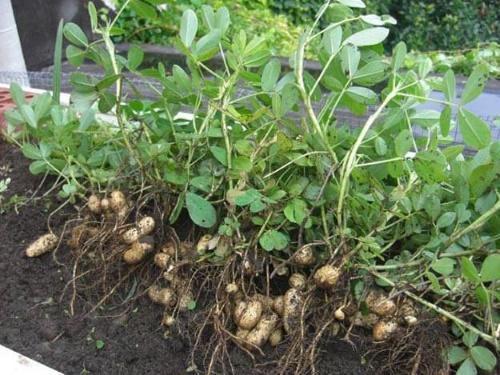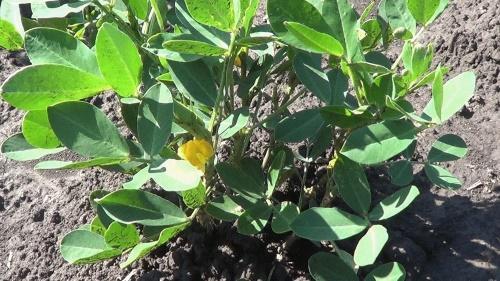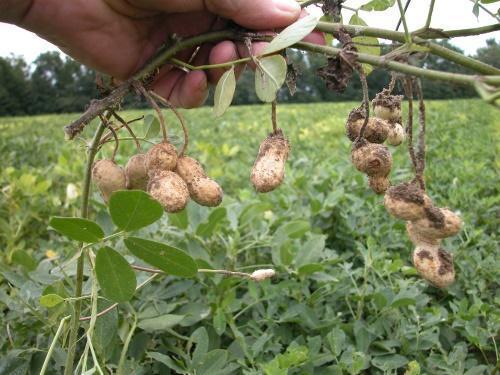Peanut fruiting features: how the culture grows
 Peanuts are called walnuts, but it has nothing to do with the walnut as a tree. Likewise, peanuts do not look like a woody shrub hazel, although many people think that delicious beans ripen this way. It would be correct to call peanuts an annual herb that grows in the form of a small bush, not exceeding 70 cm in height. Its development differs from the usual garden crops for us. How does peanut grow, what does it look like at first glance and how does fruit set occur?
Peanuts are called walnuts, but it has nothing to do with the walnut as a tree. Likewise, peanuts do not look like a woody shrub hazel, although many people think that delicious beans ripen this way. It would be correct to call peanuts an annual herb that grows in the form of a small bush, not exceeding 70 cm in height. Its development differs from the usual garden crops for us. How does peanut grow, what does it look like at first glance and how does fruit set occur?
What does peanuts look like as a crop?
If we compare an annual with those vegetables that are in every vegetable garden, then it is a cross between peas and potatoes. Externally, the bushes are very similar to pea or lenticular: they have the same oval, paired-pinnate, leaves with a light down, and long stems actively branch. The structure of the inflorescences is also similar, except that they are colored yellow.
But in terms of the root system, they differ: the peanut bush is so easy, you can't pull it out of the ground with your hands - the taproot goes deep into the soil by more than half a meter and you can't do without a shovel.
Features of fruiting
Unlike peas, in which the fruits ripen in the place of inflorescences, in the aerial part of the bush, peanut fruit grow in the ground, like potatoes. For this reason, harvesting is akin to digging potatoes, but here all the similarities end.
Elongated pods with a pair of beans inside are located far from the root system (in the sense, closer to the soil surface), but they still tie on the shoots. It works like this:
- first, the bushes bloom, and flowering lasts a day;
- then they self-pollinate, as a result of which a gynophore is tied - a new shoot;
- in conclusion, the gynophore goes deep into the soil, where, in fact, the fruit is set and ripened.
To get a harvest, peanut flowers must be no higher than 15 cm above the ground level, otherwise the gynophores will not be able to reach the ground and will simply dry out without forming an ovary.
One of the advantages of peanuts is that they do not need pollination, so they can even be grown as a pot crop indoors. In the open field, thermophilic peanuts are successfully cultivated in the southern regions of the country and even in the middle latitudes.